Rails, Coots, Gallinules and Cranes of Maricopa County
Clapper Rail Rallus longirostris
The elusive Clapper Rail can be found in thick marshes with tall reeds. This large rail is heard far more often than seen, and birding in the earlier morning in it's appropriate habitat gives better viewing opportunities, when it tends to be more active. Clapper Rails are found highly in coastal marshes, being found along much of the Atlantic Coast to the Gulf of Mexico, as well as the Pacific Coast and the Gulf of California. There are several subspecies of Clapper Rails, with the California subspecies being found in the interior of Arizona. They are concentrated highly in the southwestern part of Arizona, in the Yuma area. In Maricopa County, they make it to a few concentrations of thick marshes with tall cattails and reeds in the southwest part of the county. There are two good places in Maricopa County where Clapper Rails can be seen and heard often. The best location is the Arlington Wildlife Area (Area 8), and the Baseline and Meridian Wildlife Area (Area 7) is a very close second place. Clapper Rails are viewed more often starting in April and continuing through late summer.
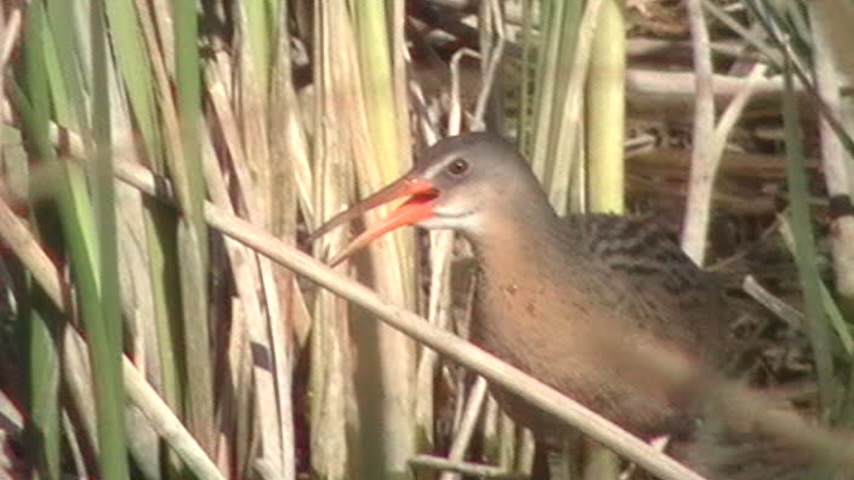
Virginia Rail Rallus limicola
The secretive Virginia Rail inhabits mostly freshwater marsh habitats in a variety of surrounding elevations and habitats and is widespread throughout much of the Lower 48. It is very hard to see and rarely comes into view, so birders often have to record this medium-sized rail as a heard only. Virginia Rails have a variety of different vocalizations, including different calls, grunts, and squeak sounds. They are widespread througout much of Arizona in these marshy habitats. In Maricopa County, they are found throughout much of the year during both migrations and all of winter. Any wetland with thick marshes and tall reeds is likely to hold a Virginia Rail. Good places to look for Virginia Rails in Maricopa County include: Most of the marsh habitat along the Lower Salt River Recreation Area (Area 2), Tres Rios Wetlands-Overflow and Hayfield, Baseline and Meridian Wildlife Area (Area 7), and Arlington Wildlife Area (Area 8).
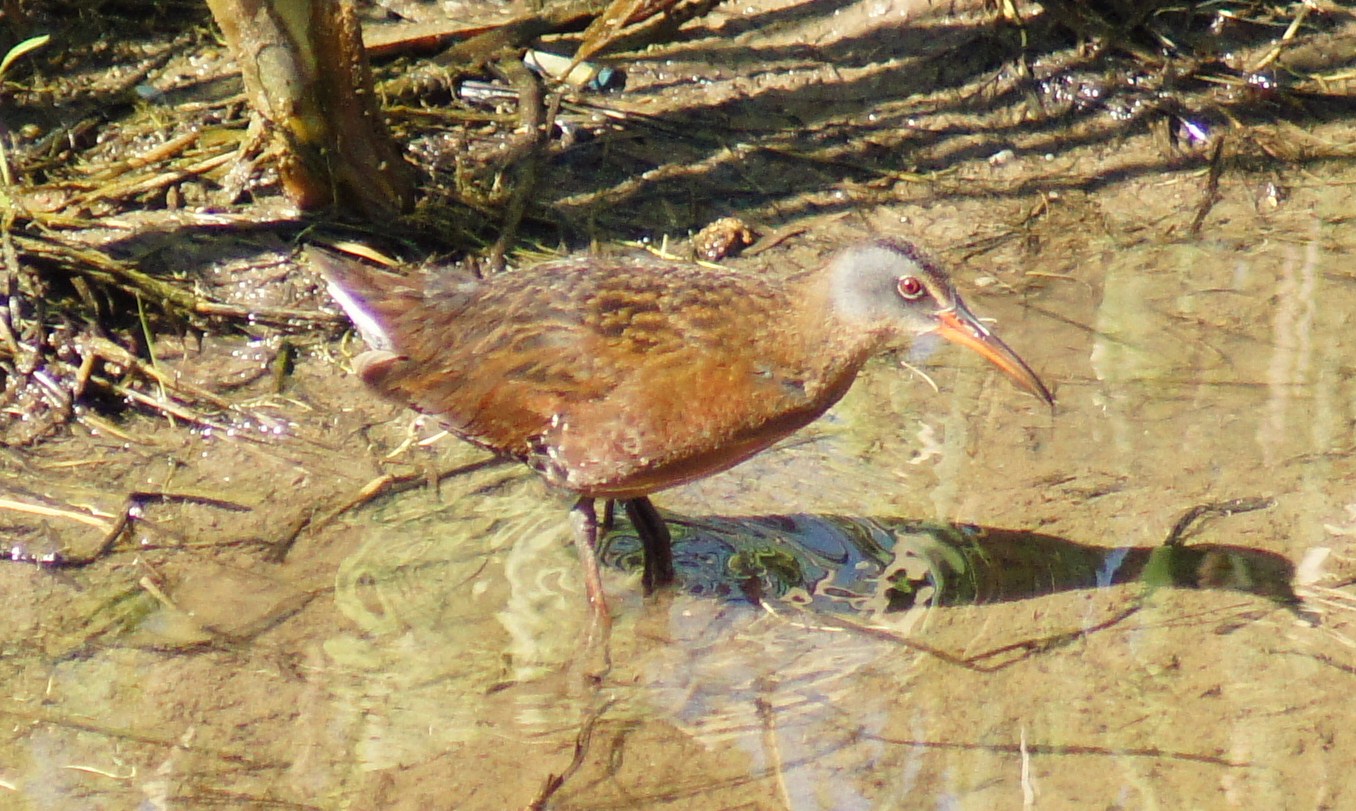
Sora Porzana carolina
The Sora is the easiest rail to view out of all of the North American rails. Soras often come into view and provide birders with enjoyable experiences. Even though it's the easiest to observe out of the rails, it is still heard far more often than seen, when it gives a variety of high, loud and whinny calls. Like the Virginia Rail, the Sora is widespread in North America but with a larger range. It prefers both fresh and salt water marshes, and winters in the southern states. Soras breed in Arizona's higher elevations, being found in marshes and wet grassy areas. They are found in Maricopa County throughout much of the year, except during breeding season. Both migrations and all of winter are good times to look and listen for Sora in wetland habitats. Look and listen for Soras in these habitats in Maricopa County which some of them include: All of the Lower Salt River Recreation Area (Area 2), Gilbert Water Ranch, Higley Road Ponds, and Veterans Oasis Park (Area 4); Tres Rios Wetlands-Overflow and Hayfield Sites, Baseline and Meridian Wildlife Area (Area 7), and Arlington Wildlife Area (Area 8).
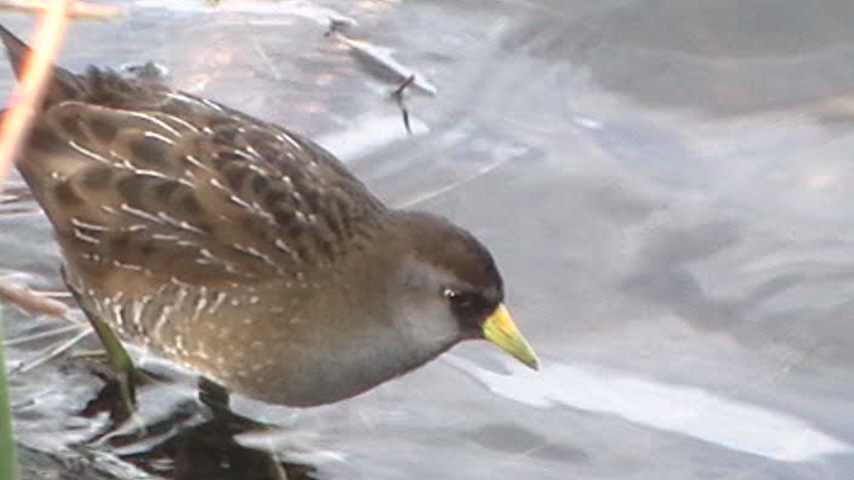
Common Gallinule Porphyrio martinica
The Common Gallinule is a year round resident of marshes and wetlands in several areas throughout Maricopa County. Formerly known as Common Moorhen, this marshbird is very chickenlike. It likes to walk on the vegetation that floats on the ponds and rivers it inhabits, where it feeds on aquatic plants and insects. Young Common Gallinules are regularly observed when the birder remains quiet and patient. Besides Maricopa County, Common Gallinules can be found in the same marshy and wetland habitats throughout the southern half of Arizona. Common Gallinules are widespread throughout the eastern United States, and are found in the west mainly in the southwestern states. Although common in the county, Common Gallinules are actually very local. They are easily found in a few locations throughout Maricopa, with these locations being: Granite Reef Recreation Area (Area 2), Phoenix Zoo-where they are used to people and come for food (Area 5), and Tres Rios Wetlands-both Overflow and Hayfield Sites (Area 7).
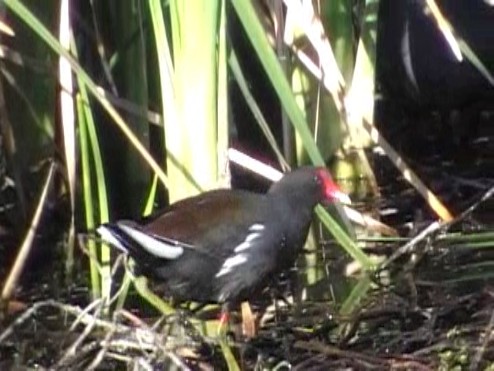
American Coot Fulica americana
The American Coot is a common sight in Maricopa County throughout the year in ponds, lakes, and marshes, as well as all of Arizona. This bird is very gregarious, forming huge flocks, especially in winter when northern populatons increase flock sizes. American Coots are very widespread throughout much of North America except the far north. Coots can be seen anywhere in Maricopa County with ease that has ponds, lakes, and marshy habitats.
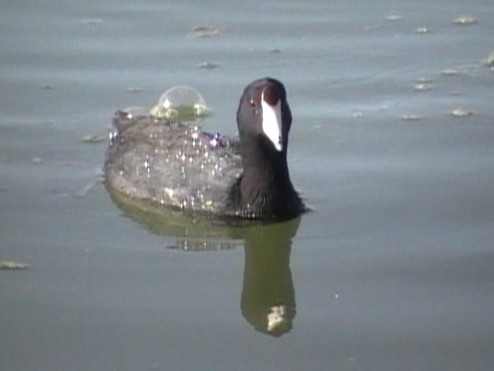
Sandhill Crane Grus canadensis
The sight of Sandhill Cranes in flight is one that will stick with a birder forever. These tall birds migrate by the thousands and gather in their wintering grounds in tremendous flocks. Their noisy calls that are mostly given in flight can be heard from distance. Sandhill Cranes inhabit fields and meadows in their breeding range, which is Alaska, much of Canada, and the northwestern part of the Lower 48. In winter, Sandhill Cranes prefer shallow ponds and marshy habitats, as well as agricultural fields. These cranes winter in the United States in some of the southern states. In some places, flocks may be observed in the thousands, where in Willcox, Arizona, this tremendous sight may be seen. Sandhill Cranes aren't as numerous in Maricopa County, but several flocks with a total together of several hundred birds winter in the southwestern part of the county annually. These cranes are found in the agricultural habitats in the Arlington to Gila Bend Area, especially along the Old Highway 80 (Area 8). Look for these tall gray birds feeding in any agricultural fields along the Old Highway 80 (see hotspot for more information), especially adjecent from the town of Palo Verde through all of the Arlington Valley, and then continuing south from Gillespie Dam for 5 miles where there are more good streches of agriculture. A specific spot that is usually good is the immediate area of the Arlington Valley that can be driven in a loop. This area is bordered by the Old U.S. 80 on the west, Desert Rose Road on the south, Arlington School Road on the east (best road overall for viewing the cranes), and Cactus Rose Road on the north. The Sandhill Cranes arrive in mid-fall and stay through all of the winter season in the county.
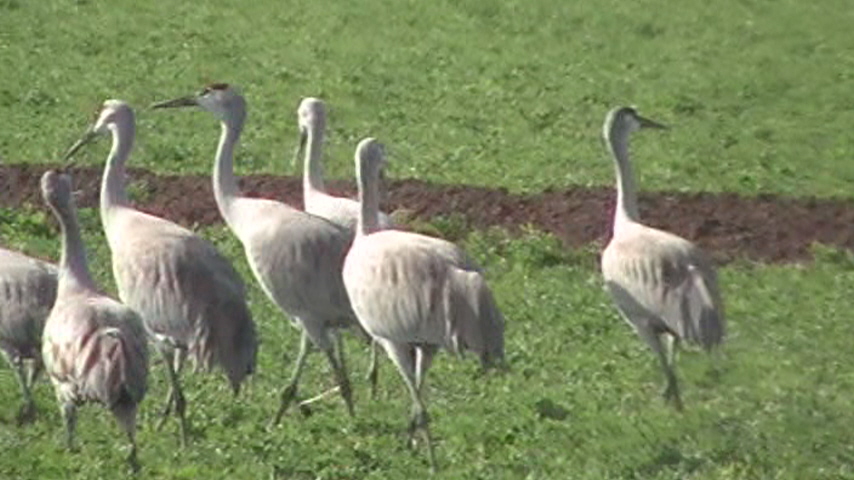
Back to What Bird Are You After? main page. |
